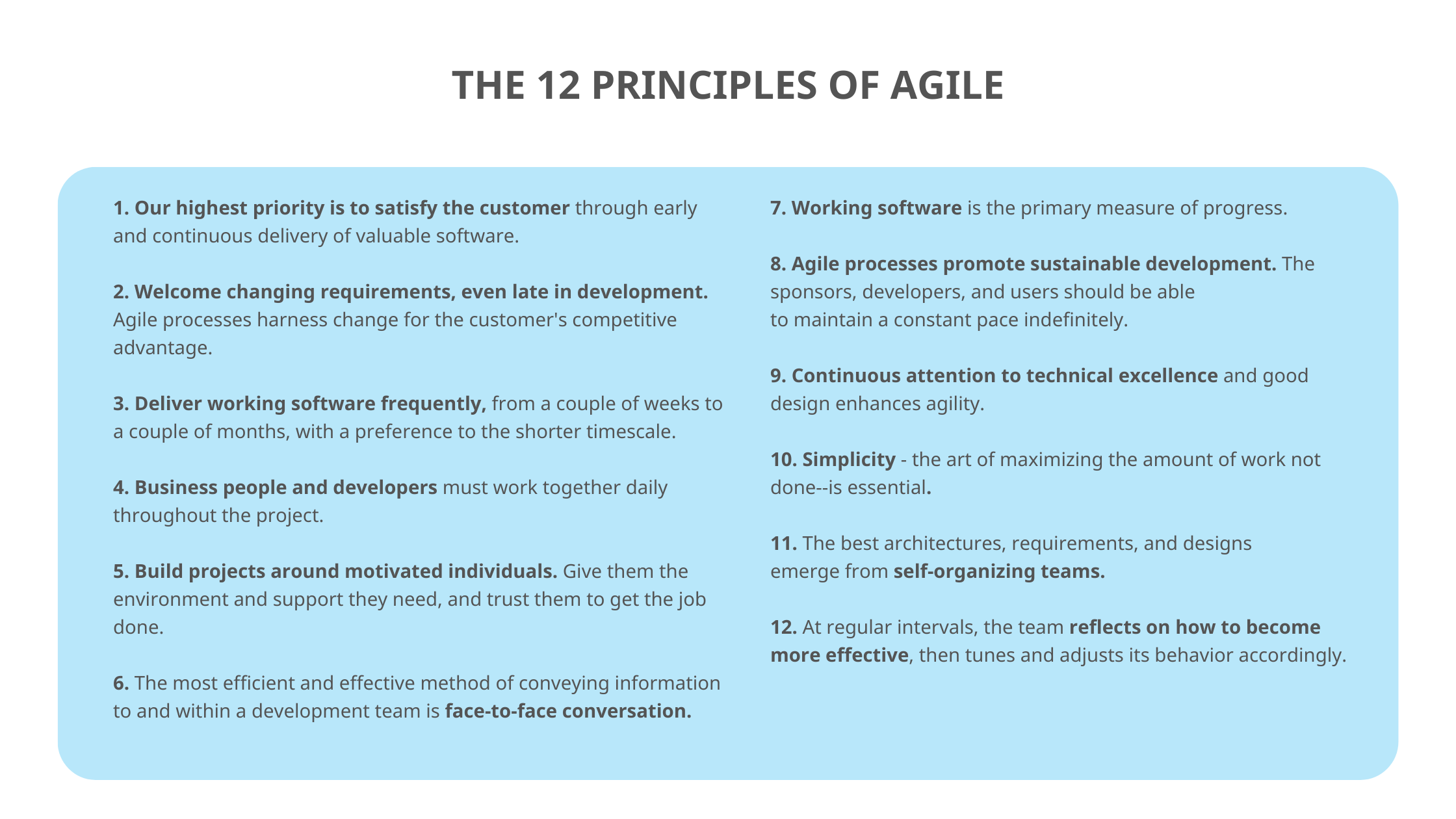Agile Beyond Software Development

GUEST POST from Diana Porumboiu
Research reveals that 90% of executives recognize the critical importance of agility for their company’s future success, with 96% emphasizing the need to increase agility in the future. What’s more, agile companies grow revenue 37% faster and generate 30% higher profits than their non-agile counterparts.
Incumbents are shaken by the highly dynamic environment they operate in, and they are too slow to respond to disruptive changes. 52% of companies in the Fortune 500 have either gone bankrupt, were acquired, or ceased to exist.
An AEIU survey, 27% of respondents cited their organization’s lack of agility as a competitive disadvantage in anticipating marketplace shifts. Unfortunately, it’s not enough to be better and stronger, you also need to be faster to swiftly adapt to the market race.
Based on our experience in working with top innovators, and on market insights and trends, we can see that the future of innovation management is agile. What does this mean, and how does it concern you, the ambitious innovator?
The following two articles dedicated to agile innovation aim to answer these big questions and act as a guide to agile innovation management. Let’s start by framing the major concepts and explain the thinking behind them and later continue with practical and actionable tips.
Let’s start by untangling the intricate connection between business agility and innovation management by shedding some light on all these terms: innovation, innovation management, agile and business agility.
Innovation is a highly debated topic. You might be sick of hearing this buzzword everywhere, but whether you choose to use it or not, the concept behind it is here to stay.
The short definition of innovation comes from the Merriam-Webster dictionary: innovation is “the introduction of something new.”
This is an oversimplification, so we have to take it one step further to explain the nuances.
Innovation is not just about generating and implementing new ideas. While these ideas can refer to products, services or processes, adding innovation to the mix means that you bring about positive change and create value.
Through innovation you should identify new opportunities that can be transformed into tangible outcomes that address unmet needs, solve problems, or improve existing conditions.
To achieve these results, you need to manage a series of activities that are involved in the process of introducing those new ideas. These activities can range from ideation, development prioritization, evaluation, to implementation and launching of new products or introducing new processes. This is what we call “innovation management”.
The challenge is not only in managing all these activities to pursue innovation, but also in doing it fast.
Here, we refer to the pace of innovation, which plays a crucial role in sustained business growth.
In a nutshell, the pace of innovation is the speed at which an organization can improve their existing products and services and their ability to develop them while capturing the needs of the constantly evolving markets.
Your rate of improvement (so the pace of innovation), has compounding, exponential returns and thus gives a clear competitive advantage.
Why are we talking about the pace of innovation? Because it goes hand in hand with the agile mindset, which in the past decade has developed into the more holistic approach, business agility.
A short introduction to “agile”
Agile as a business concept emerged in 2001 with the “Agile Manifesto”.
At its core, agile refers to a set of twelve principles and four values intended for teams that work on software development. It started as a manifesto, but the brains behind it never imagined that their vision on how to better develop software would play such a pivotal role in management at an organizational level.
This is, in a nutshell, the 2001 version of agile:
- The four values of the Agile Manifesto. The idea is that what is on the left should be valued more than what is on the right.
- Individuals and interactions over processes and tools
- Working software over comprehensive documentation
- Customer collaboration over contract negotiation
- Responding to change over following a plan
- The twelve principles behind the Agile Manifest that the signatories followed.

Today, “agile” left the dark chambers of software development to capture the attention of leaders across many industries.
These days there are countless frameworks and practices that ride the agile wave, but to be truly agile it’s more important to understand the thinking behind the agile concept, before deciding what methodologies are fit for purpose.
Agile 2.0
Agile 2.0 is the next iteration which comes from different authors who want “agile to pivot”. Given today’s use of agile and how it has been growing outside of its initial purpose, the initiative is understandable and laudable.
Agile 2.0 is more anchored in today’s digital world and puts greater emphasis on some areas that were missing or misunderstood in the first version.
It’s also more balanced and encourages a more holistic approach. For example, even though the first manifesto does not incite chaos by making the case of self-organizing teams, it fails to address the importance of leadership, which agile 2.0 wants to rectify. To get a better understanding of agile 2.0, you can read the principles on the dedicated page.
To summarize, “the agile way” refers to the ability to respond to change, adapt, build things in smaller cycles, get feedback, and unveil new opportunities.
Why Business Agility is More Relevant than Isolated Agile Practices
Agility promotes flexibility, collaboration and continuous improvement. It’s about adapting and responding quickly to changes. This is why it also helps increase the pace of innovation. Of course, easier said than done.
We have seen in the past twenty years how agile has outgrown its software development box. The problem is that most organizations that want to be agile are trying to fit a square peg in a round hole. This leads to frustrations especially on the receiving end, when employees are forced into these “agile ways” even though leadership did not set the stage for agile in the first place.
Instead of fixating on agile methods, the focus should be on how to scale the approach at a higher level through business, organizational and enterprise agility. They might seem one and the same thing, but there are nuances that differentiate the three.
While business agility focuses on operational responsiveness, organizational agility emphasizes cultural and structural adaptability, and enterprise agility encompasses a broader perspective, incorporating external relationships and ecosystem dynamics in addition to internal capabilities.
In all three scenarios, achieving an extensive agile transformation is a highly complex journey and requires a top-down approach. However, it doesn’t mean that agility can’t also be achieved bottom-up, outside the IT department. In our work with customers, we see many innovation champions who put the wheels in motion through their determination and commitment to embrace agility.
Even though the agile concept is used as a badge of honor by many organizations, it’s still highly misunderstood.
That’s why it’s also important to understand not just what agile is, but also what is not.
What is NOT Agile
Scaling agile thinking organisation-wide it’s very difficult and hard to achieve. One reason is the lack of direction. Leaders and managers rush into methodologies and frameworks that sound good because others seem to be successful in implementing those. But more often than not, they forget to ask themselves why they want to be agile in the first place. Is it for the right reasons? Is there a good understanding of agile before bringing on board an agile coach?
Using Kanban, organizing Sprints, and hiring Scrum Masters will not automatically make you more agile. It’s important to understand agile holistically and put it into context before getting to the actual tactics and tools.
Start by asking yourself, what do you want to achieve, and what problems you want to solve with agile?
If your goal is to increase efficiency, deliver more or faster, increase productivity, or quality, there are plenty of other methods that can help you achieve this. Agile can contribute to these, but it’s not a prerequisite.
Agility is primarily about adaptability and changing conditions. So, the main reason for considering the agile approach should be market responsiveness: your organization’s ability to adapt rapidly to changes that are happening in the market.
Without clearly understanding the above, it’s easy to see how, for many organizations, agile became synonymous with processes like scrum.
Just to give a bit of context, Scrum is the most popular method (even though it precedes the Agile manifesto) used now by agile practitioners. It’s an iterative framework that brings small teams together to find adaptive solutions for complex problems.

A scrum process is built around product innovation and works best when there is a lot of uncertainty, and you don’t know which way your product should go.
In Scrum, work is organized into short iterations called sprints, usually lasting 2-4 weeks, during which a cross-functional team works to complete a set of tasks or goals. Sprints have been adopted by other departments too, not just those working on product development.
But whether these can be successfully implemented outside of software development and scaled to other departments, is still a matter of debate. We’ll explore the reasons behind this in the next section where we dissect the challenges and pitfalls of agile.
Bottom line, scrum is most suited for exploration and validation of assumptions. Scrum is not about speed, efficiency, and predictability. If you’re in a highly exploratory environment Scrum is a valuable practice.
Then there are those teams that proclaim their agility through Kanban. We explained the tool in greater detail here, where we show how it’s used to improve flow efficiency and optimize operations.
While it can be a highly valuable tool within the agile transformation, Kanban on its own is not enough to increase agility.
So, while these are very popular agile practices, useful in their own right, they don’t have the power of embedding agility at the core of the business.
What does this all have to do with innovation management and how can you actually drive agility to innovate? Something to explore in the next article.
Article originally published on viima.com/blog
Image credit: Unsplash.com, viima.com
![]() Sign up here to join 17,000+ leaders getting Human-Centered Change & Innovation Weekly delivered to their inbox every week.
Sign up here to join 17,000+ leaders getting Human-Centered Change & Innovation Weekly delivered to their inbox every week.
Pingback: Agile Innovation Management (Part Two) | Human-Centered Change and Innovation
Pingback: Top 10 Human-Centered Change & Innovation Articles of March 2024 | Human-Centered Change and Innovation